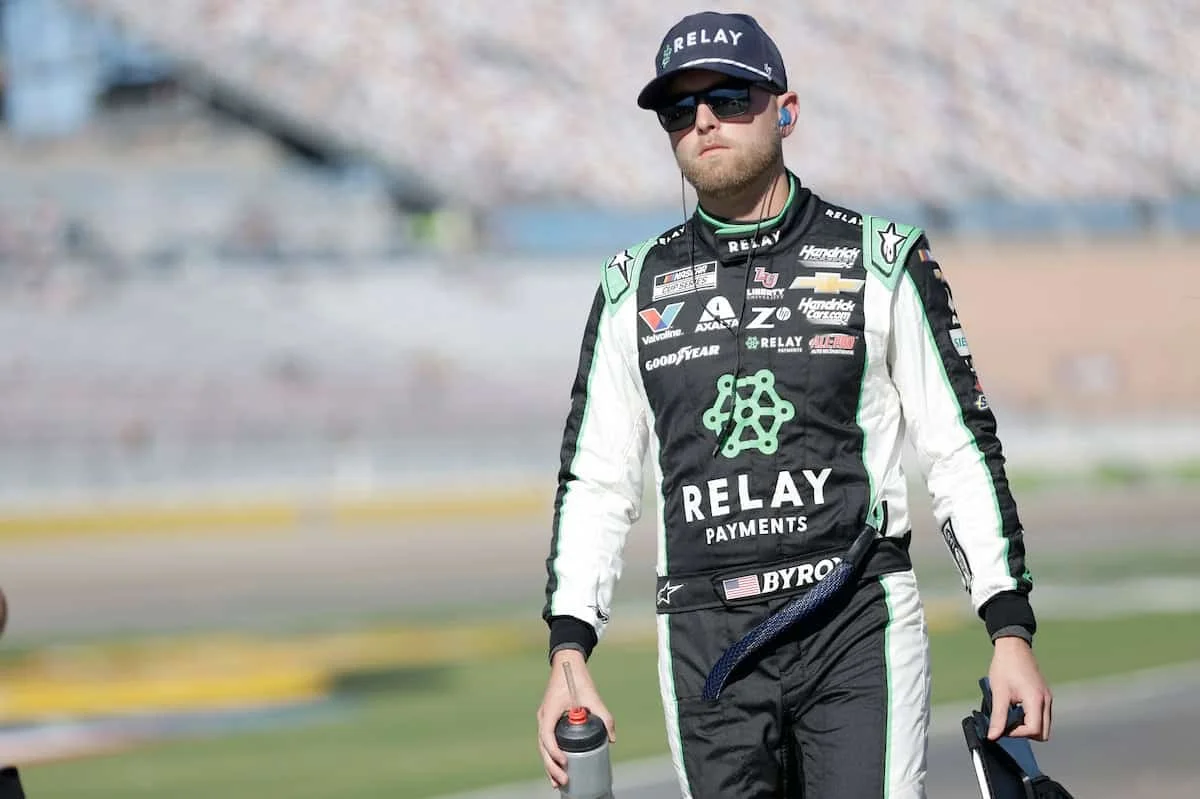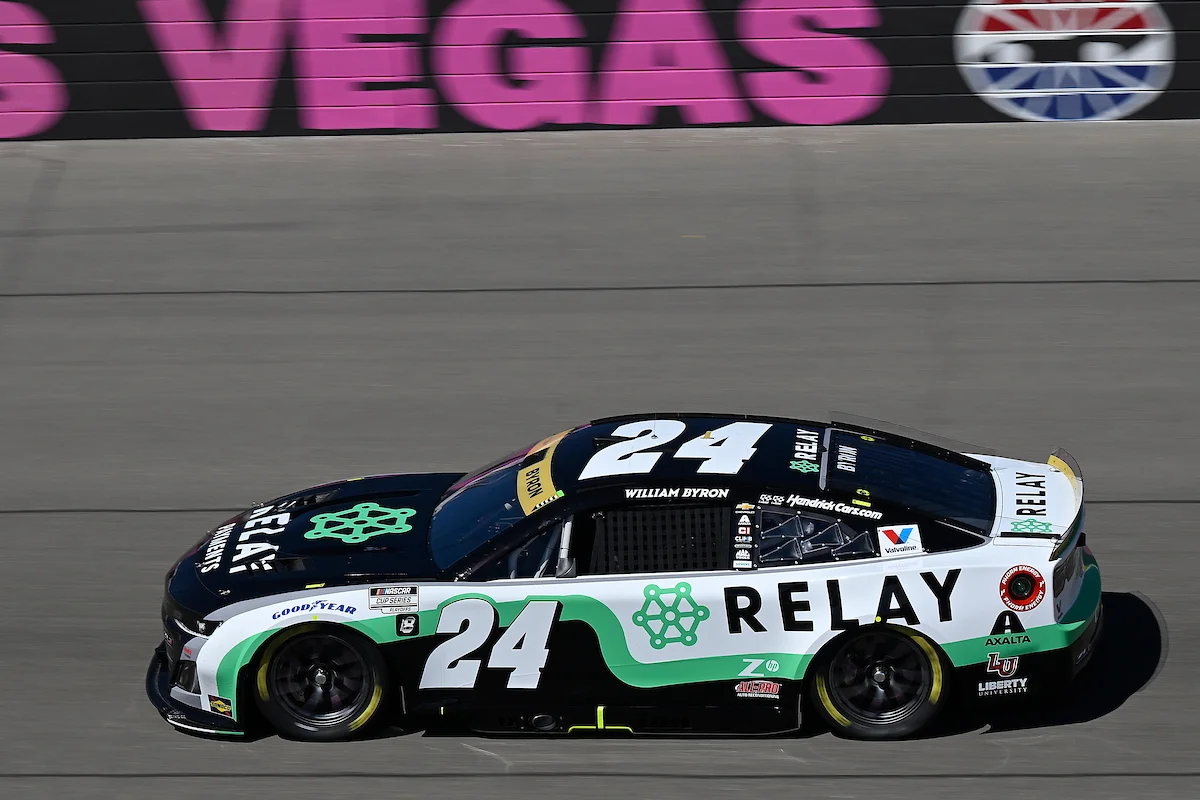William Byron’s aspirations for a high finish in Sunday’s high-stakes playoff race took a dramatic turn in the closing laps at Las Vegas Motor Speedway after a collision derailed his run. The William Byron Las Vegas crash, which occurred as he was running in second place, has ignited tension and controversy among NASCAR teams and fans, with questions swirling about miscommunication on track and its playoff implications.
Critical Incident in the Closing Laps at Las Vegas Motor Speedway
As the race reached its decisive phase, William Byron found himself positioned for a strong result, likely inside the top five. While pushing for position in Stage 3, Byron unexpectedly collided with the back of Ty Dillon’s car just after Turn 4. According to Byron, he had no warning that Dillon, who was laps down and driving the No. 10 chevrolet/”>Chevrolet, was about to peel off onto pit road. The crash, which unfolded at full racing speed, instantly dashed Byron’s hopes of advancing cleanly through the playoff round and created immediate controversy about the actions of Dillon’s team and spotter.
NASCAR analyst Jeff Gluck of The Athletic explored the sequence on The Teardown podcast, pointing out uncertainty about Dillon’s approach to pit road while being several laps down and with leaders approaching. The confusion appeared to center on a lack of visible signals from Dillon—no hand-waving or other clear notification that he was pitting—and apparent miscommunication regarding the pit strategy among Dillon’s team.

“It didn’t seem like from what I can tell — because originally on Byron’s radio they were like, ‘Oh, Dillon came from two lanes up down the track.’ I thought it didn’t seem like it was extreme, but what was different was you didn’t see a lot of waving,”
Jeff Gluck, Journalist.
Spotters are responsible for alerting nearby cars to pitting drivers, especially when races reach late stages and pit strategies diverge. In this case, the lack of overt signaling or coordination left Byron in a perilous position.
“Sometimes, I understand you don’t wanna wave off a driver too much because you’re coming to pit road and you’re trying to short pit, so you’re not trying to alert the competition. But clearly, he was on a different pit strategy by pitting way later after it seemed like the pit cycle was well over. Clearly, Byron didn’t think there was any cars left to pit. And so, you would think if you’re going to be in that situation, you better be damn sure that the people around you know this guy is pitting. Waving a lot or making the spotter know whatever, it just seemed like that didn’t happen here. Now, was he super high on the track? That didn’t seem like it,”
Jeff Gluck, Journalist.
Communication Failure and Fallout for the Playoffs
The incident left Byron and his team frustrated, with confusion around why there was no robust warning given the stakes of the Round of 8. With Ty Dillon laps down and out of contention for a meaningful position, NASCAR observers and fellow competitors questioned the decision-making that led to such a late-race pit stop in front of the leaders.
Jordan Bianchi, a colleague of Gluck, echoed this criticism on The Teardown, highlighting how the crash was avoidable and expressing disbelief at how little was done to alert those on track of Dillon’s intent to pit. Bianchi emphasized that when a car is multiple laps down and no longer in playoff contention, it is especially important to avoid interfering with the fights at the front of the field.
“The bigger picture here is this was an accident, no one planned on this, but this was really unnecessary because Ty Dillon and the 10 team are having a bad day. They’re out to lunch today, they’re not having a good day, the highest they ran today was 27th. They, obviously, are just not in this,”
Jordan Bianchi, Journalist.
The lack of communication had serious consequences for the playoff picture. Byron, who led in regular season points, saw his championship bid severely compromised as a result of the William Byron Las Vegas crash. The crash left him 15 points below the playoff cutline with only two races remaining in the Round of 8, leaving little room for further error.
“You should be shooting off fireworks off the spotter’s stand or waving flags or something to let everyone know we’re gonna pit, or you just say listen, the leaders are coming quick, they’re on our butt on newer tires, so you know they’re gonna get there pretty quick, we’re just gonna pull over sooner and unconventionally get on to pit road different than we normally do. But again, you don’t have to worry about track position because your day is already over pretty much, or you let them go by and then you pit. This feels like it could have been handled very differently… unfortunately for William Byron, he’s the casualty in this,”
Jordan Bianchi, Journalist.
Broader Implications for NASCAR Teams and Playoff Tensions
The aftermath of the William Byron Las Vegas crash has sparked urgent discussion around the importance of communication between teams and drivers, especially during high-pressure playoff situations. Analysts noted how longstanding debates over spotter protocols and manufacturer teamwork became central topics, with the incident illustrating just how costly communication breakdowns can be when the championship is at stake.
As Byron faces a steep challenge to recover his playoff position in the coming races, the Las Vegas crash stands as a cautionary example to all teams regarding the stakes of on-track coordination. NASCAR officials and teams are now under greater scrutiny, as the outcome of communication lapses could decide not only race finishes but also the championship trajectory for drivers like Byron.
The next two playoff races will likely see heightened awareness and perhaps even procedural changes in how spotters and teams alert each other, as drivers seek to avoid similar costly incidents. For William Byron, overcoming the setback at Las Vegas will require not only speed but renewed vigilance from everyone involved with his playoff campaign.
